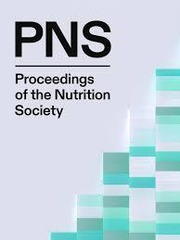No CrossRef data available.
Article contents
Tools and methods used to evaluate weight loss apps: a systematic review
Published online by Cambridge University Press: 09 October 2025
Abstract
Obesity affects 1 in 8 people(1). Mobile apps offer a convenient and potentially impactful solution for weight management(2). However, knowledge of app quality and key app characteristics supporting weight loss is unclear. Most studies have focused only on popular apps(3) or certain user groups(4). The aim of this study was to review studies that evaluated the quality of weight loss apps and identify tools or methods that they used.
A systematic review was conducted to assess studies evaluating weight loss apps and identify tools or methods for quality measurement, following PRISMA guidelines(5).
Eligibility criteria included studies published within the last five years, explicitly evaluating weight loss apps, focusing on adults, and written in English from four databases: PubMed, Embase, Medline, and Web of Science. Studies were excluded if they involved non-digital weight loss interventions, evaluated other clinical patients, or were non-original research (e.g., reviews, meta-analyses, conference papers, or reports). After selecting the final included studies, reviewers extracted tools/methods to evaluate the quality of each app and synthesized the findings to identify the evaluation tools/methods used and key features of the weight loss apps.
From a total of 567 articles, we identified 13 relevant studies and 47 apps. Half of the studies were conducted in Asian countries, including China, India, Indonesia, Lebanon, and Saudi Arabia. The rest took place in individual countries across various continents, such as Australia, Europe, and North America. Apple’s iOS was the most used platform in these studies, appearing in six studies (46%), followed by Android in four studies (31%). Only one study (8%) utilized both platforms, while two studies (15%) did not specify the platform used. Out of the 13 studies, ten evaluation tools/methods were used to measure app quality: Mobile App Rating Scale (MARS) (n=4), semi-structured interview (n=2), System Usability Scale (SUS) (n=2), own-questionnaire (n=2). Other evaluation methods used less commonly were quantitative indicators (n=1), EVALAPPS (n=1), Evidence-based Strategies (EBS) Assessment (n=1), six sigma (n=1), text-mining approaches (n=1) and Taxonomy Behaviour Change Techniques (BCTs) (n=1). One study might use more than one tool/method.
Despite the growth of weight loss apps in the market, the evidence base is still limited with only 46 apps having been formally evaluated for app quality. The tools and methods used to evaluate the quality of weight loss apps are diverse. Ten common evaluation tools or methods have been identified, and MARS is the most widely utilised, following by SUS, and own-questionnaire.
Information
- Type
- Abstract
- Information
- Proceedings of the Nutrition Society , Volume 84 , Issue OCE4: Nutrition Society Conference 2025, 1-2 July 2025 , August 2025 , E284
- Copyright
- © The Author(s), 2025. Published by Cambridge University Press on behalf of The Nutrition Society


